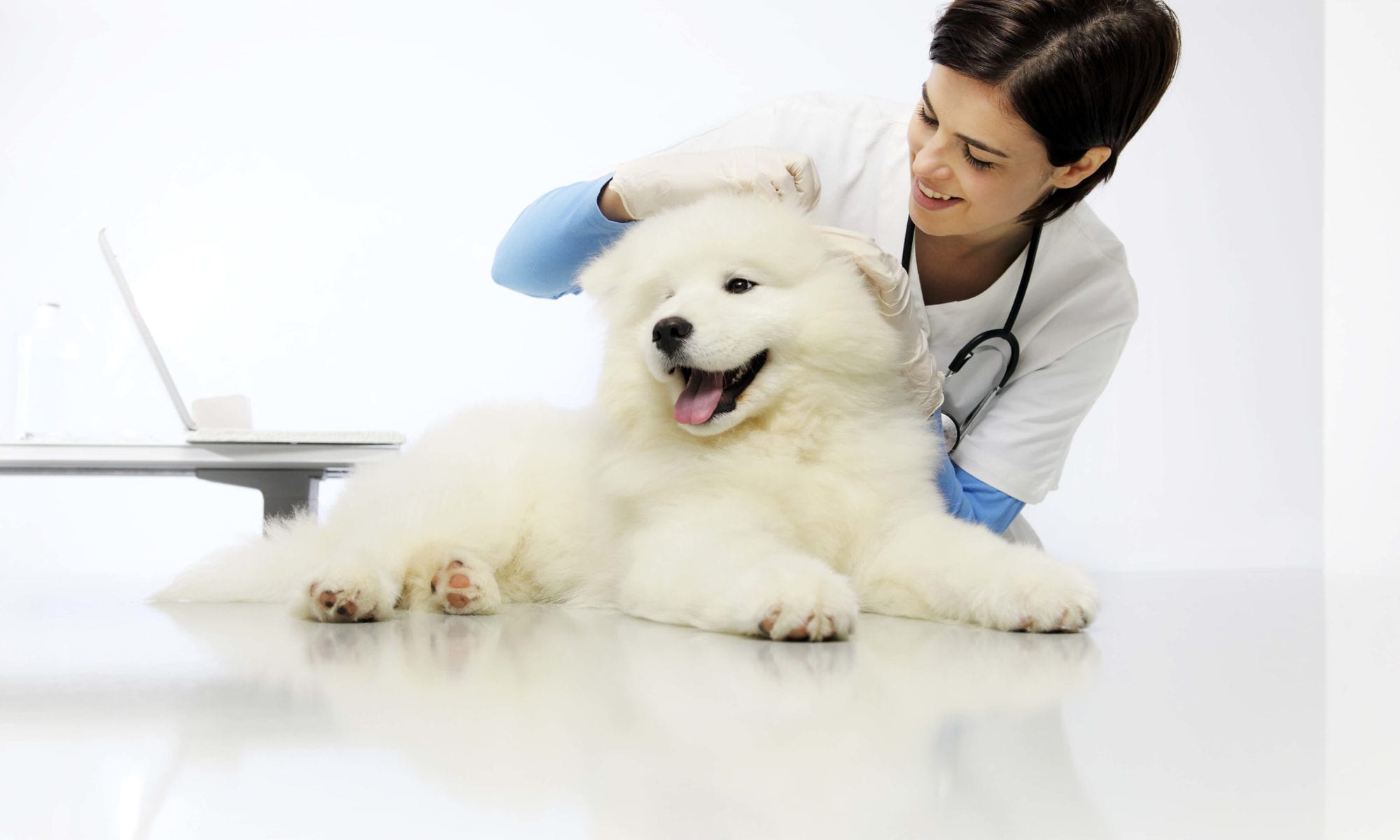Reduce Your Dog’s Stress at the Vets and Groomers

You want to reduce your dog’s stress at the vet and groomer, but you may run into this problem: your dog always seems to know.
You open the car door and invite your pup inside. You could be bound for the park, or a surprise play date, or for Bacon Fest 2021, but somehow, they know where you’re going. They’ve read your mind, and they know a nail trim, a haircut, or some unwelcome poking and prodding is in their future. They look into your eyes, and you can’t help but feel like you’re betraying them, just a little.
Now you’re both stressed. But you have to get it done, so you shuffle into the car and head on your way.
If this sounds like you, you’re not alone. Up to 78% of dogs experience vet and groomer anxiety. Luckily, there’s plenty you can do to make the experience better for you and your furry life-mate.
First, it’s important to understand exactly why your dog is afraid of the vet and/or dog groomer.
Why Is My Dog Afraid?
Your dog might be scared of going to the vet or groomers for any number of reasons:
- Bad Past Experience: Let’s face it, no matter how chilled out your dog may be, getting handled by strangers in ways that sometimes hurt won’t likely create a positive impression. This is especially common if you rescued your pup from an uncertain past. Those experiences can run deep.
- The Smell: When they’re stressed out, dogs give off a unique, olfactory signature that tells other dogs there’s danger nearby. It wafts off their skin and is present when they do their business outside the vet’s/groomer’s office.
- Unfamiliarity: When everything’s going right, your dog will only make these visits a few times per year. That’s hardly enough repetition for them to see it as part of their routine. Dog’s love a regular schedule, and a visit to the vet or groomer usually represents a break in their routine. That’s always a recipe for stress.
What Can I Do to Reduce My Dog’s Stress at the Vet and Groomer?
Helping your pup isn’t a race. It’s a process. It takes patience, love, and understanding on your part. The calmer you are, the calmer your dog will be. Role-modeling the emotional behavior you want to see in your dog is a great starting point for acclimating them to stressful situations, and it’s great for you, too! It’s just one of the ways a positive feedback loop can benefit you both.
Three Tips to Get Started:
- Groom at Home: Regular brushing and maintenance care will help your dog get used to some of the objects they’ll experience at the vet and groomer. Doing it in the home allows your dog to make positive associations in a safe place that they can carry over during their yearly visits. It’s also a great way to make your dog feel good while you bond during the process.
- Clinical Handling: If your dog isn’t used to it, some of the handling they’ll receive at the vet and groomer can feel unnatural to them. Things like examining their teeth, touching their paws, or being on their back can make them feel threatened. Try regularly brushing your dog’s teeth with a vet-approved, enzymatic toothpaste, or make touching their paws a part of your petting regiment. Always be gentle and go slow. If your dog gives you any sign of discomfort, immediately back off and slow the pace. It’s all about trust. Trust must be built over time, even if you two are already friends. Patience pays dividends!
- Seek Professional Training Services: Not everyone has the time or skills to do the kind of training that will most help reduce their dog’s stress at the vet and groomer. If you fall into that category, don’t worry! There are kind, compassionate training services out there just for you. Whether conducted at home or by professionals, every dog deserves the chance at stress-free cooperative care.
Let the Pros Help!
At K9 University, we have your back. Our industry-leading trainers can help you on your journey to stress-free visits to the vet and groomer. Check out our training options, meet our staff, and enroll today!


